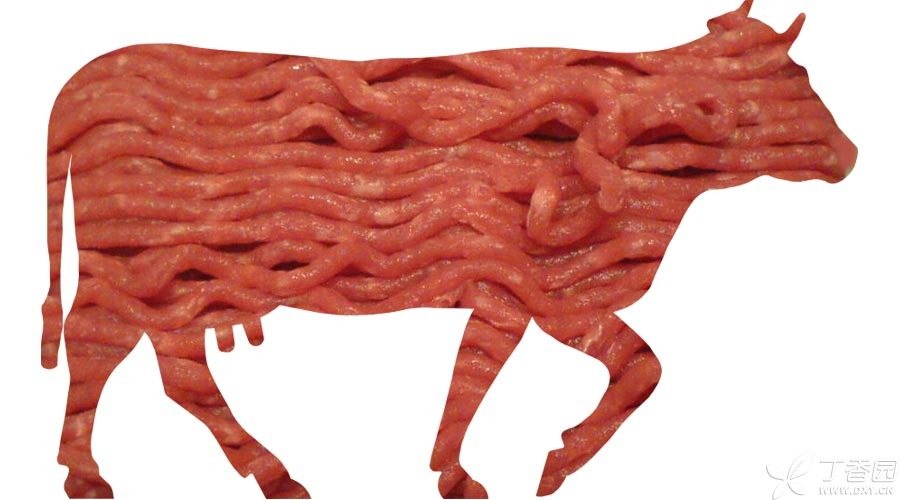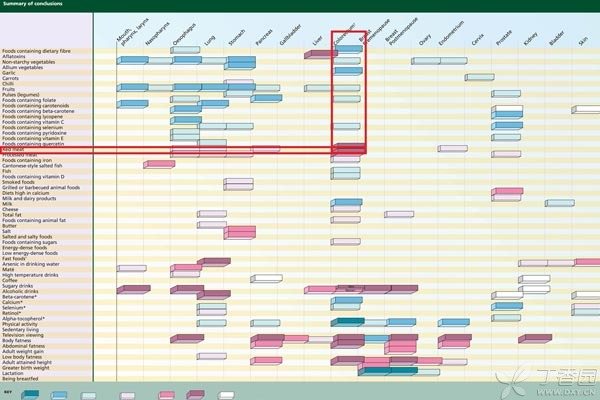
Tick-tock, tick-tock… When the second hand on the dial passes 10 scales, one person has been diagnosed with cancer in China.
According to the 2012 Annual Report of China’s Cancer Registry released by the National Cancer Registry not long ago, Every year, there are about 3.12 million new tumor cases in our country, with an average of 8,550 people recruited every day. Investigate its reason, the high incidence of cancer is closely related to people’s bad eating habits, and eating a large amount of red meat is one of them, so we should do it how, so as to minimize the risk while leaving fragrance on cheeks and teeth?
First of all, let’s understand that what is red meat.
In fact, this is a nutrition word, so far there is no clear classification and definition. According to the western culinary world, red meat refers to meat that is red when raw and darkens when cooked. Starting from this definition, almost all mammals can be classified as red meat.
In contrast, the red meat that Chinese people are most exposed to in their daily diet is pork, beef and mutton. Red meat is red because it contains myoglobin. This protein contains heme and has a strong affinity for oxygen, so it has the function of storing oxygen in muscle tissue.
Meat plays an important role in our daily diet. It is an important source of protein, providing almost all fatty acids needed by the human body, and is rich in various trace elements and vitamins.
Red meat plays an indispensable role in all the major cuisines in our country. Even when Mr. Dongpo was demoted to Huangzhou, he wrote the famous doggerel “Ode to Pork”. Dongpo pork, which started from him, has become a famous dish with lasting fragrance through the ages.
Red meat causes cancer, and colorectum is definitely on the list.
It has not been too long for the Chinese to get rid of the problem of food shortage completely. They can eat meat willfully with great difficulty, but why is it wrong?
It turns out that recent studies have found that the large intake of red meat is related to the increased risk of colorectal cancer, breast cancer, prostate cancer, bladder cancer, gastric cancer, endometrial cancer, lung cancer and other cancers.
Only when there is evidence can there be truth. First, let’s list some research results.
In 2005, Danish researchers followed 478,040 healthy people in 10 European countries for an average of 4.8 years. The analysis results showed that the risk of colorectal cancer was positively correlated with the large intake of red meat [1].
In 2007, the World Cancer Research Fund published a report saying that meat intake is related to colorectal cancer and cardiovascular diseases, and recommended that people reduce the intake of meat, especially red meat and deep processed meat products [2].
In 2012, researchers from Harvard University analyzed the health data of about 120,000 people in the past 30 years and studied their eating habits and health status. The data showed that eating about 85 grams of red meat such as pigs, cattle and sheep every day increased the risk of premature death by 13%. Eating one serving of processed red meat products, such as sausage or bacon, every day increases the risk of premature death by 20% [3].
In 2012, a study by the University of Southern California found that red meat cooked at high temperatures, especially fried red meat, may increase the risk of prostate cancer by as much as 40% [4].
As a matter of fact, there are far more studies on the impact of red meat on cancer risk, and the types of cancers involved are all over the body. Considering the diversity, level and population coverage of these studies, the conclusion of a single study is not final.
In view of this, the National Cancer Institute has integrated more than 7,000 studies, comprehensively considered the evidence strength of different studies and the correlation between food/lifestyle and cancer risk, and produced a chart on the correlation between food/lifestyle and cancer risk.

The picture comes from the American Cancer Institute (click here to view the original picture)
This chart clearly shows that it is almost certain that intake of red meat increases the risk of colorectal cancer.
Other limited studies have confirmed that intake of red meat increases the risk of esophageal cancer, lung cancer, pancreatic cancer and endometrial cancer. There is no conclusive evidence to support the effect of red meat on other cancer types.
Why does red meat cause cancer?
Although the relationship between red meat and colorectal cancer has been established, which component of red meat is the culprit? Unfortunately, due to the lack of corresponding case-control and prospective studies, the clear answer is not yet known. At present, only the following [suspects] are inferred from some relatively preliminary studies.
Step 1: Fat
The saturated fat in red meat inhibits insulin production, And stimulates bile acid to enter the duodenum. After a series of complicated biochemical reactions, Deoxycholic acid and lithocholic acid are formed. Researchers found that these secondary bile acids can promote the formation of colorectal carcinogens in animal experiments. In addition, large intake of high-fat red meat can also lead to obesity, which is also a risk factor for cancer.
2. Nitroso compound
It is believed that people who pay attention to food safety are familiar with these compounds. Nitroso compounds can often be seen in bacon, smoked and marinated deep-processed red meat. However, a large number of studies have shown that lung, liver, kidney, breast, stomach, pancreas, colorectum, bladder and other possible target organs for carcinogenic effects of nitroso compounds.
3. Polycyclic aromatic hydrocarbons
This kind of substance is the product of incomplete combustion of organic compounds and widely exists in deep-processed meat products, especially traditional smoked meat. The representative of polycyclic aromatic hydrocarbons family is phenylpropionic acid. I vaguely remember that this carcinogenic substance also passed a chemistry college entrance examination paper, which shows its strong carcinogenicity.
4. Heterocyclic amine
High temperature is a prerequisite for the production of such compounds, which are produced in large quantities when cooking temperatures reach or exceed 200 ℃-such as during barbecue and frying of red meat. Studies have proved that heterocyclic amines can cause DNA mutations, and abnormalities in gene structure and function are prerequisites for inducing cancer.
5. Heme compound
As mentioned above, red meat contains a large amount of hemoglobin. During cooking or processing, hemoglobin further forms ferrous hemoglobin. Although these compounds are not carcinogenic in themselves, they are metabolized into cytotoxic factors in the intestinal tract and promote the production of carcinogens.
Can you still eat meat?
Long-term consumption of large amounts of red meat will increase the risk of some cancers. However, red meat is not only an important source of nutrition for the body, but also can bring graceful taste and flavor to the eaters. If you rush to expel red meat from the diet and seem to choke off food, is there the best of both worlds?
As for the safety of food, there is a good saying: [talking about toxicity without dose is playing rascal]. Red meat is no exception.
Red meat is a risk of cancer on the premise of large and long-term intake. Therefore, in order to reduce the risk of the disease, it is necessary to reduce the intake and frequency. The World Cancer Research Foundation recommends that the intake of red meat should not exceed 500 grams per week, which means that a kilo of meat per week is enough. < < Dietary Guidelines for Chinese Residents > > also recommends reducing the proportion of pork consumed.
If you have a good couple of green pepper shredded pork, as long as you choose lean tenderloin meat as the material and take it easy, it is absolutely no problem to have some every day. If you rub a self-service hot pot with three to five relatives and friends one day and face the table full of fat cattle and rinse meat, you can’t refrain for a while, and it is best to stay away from delicious red meat consciously in the next few days.
Some readers may ask, how can nutrition be guaranteed if the intake of red meat is reduced?
This situation can be replaced by white meat such as fish and poultry. These are all good sources of high-quality protein, fat-soluble vitamins and minerals. Compared with red meat, white meat has relatively low fat and hemoglobin content, and the cooking method pays more attention to a [fresh] word. Unlike red meat, which has various deep processing methods, heterocyclic aromatic hydrocarbons and heterocyclic amines and other carcinogens are much less. These advantages make white meat relatively healthier.
Finally, I present ten anti-cancer suggestions from the World Cancer Research Foundation, hoping that everyone can stay away from cancer and live a healthy life.
1. Be as light as possible within the normal weight range;
2. Adhere to moderate exercise every day;
3. Avoid high-calorie diet;
4. Food from plants is the main source;
5. Eat less red meat and not processed meat;
6. Moderate drinking;
7. Limit salt intake and do not eat moldy food;
8. Do not take dietary supplements to prevent cancer;
9. Quit smoking;
10. Breastfeeding.
